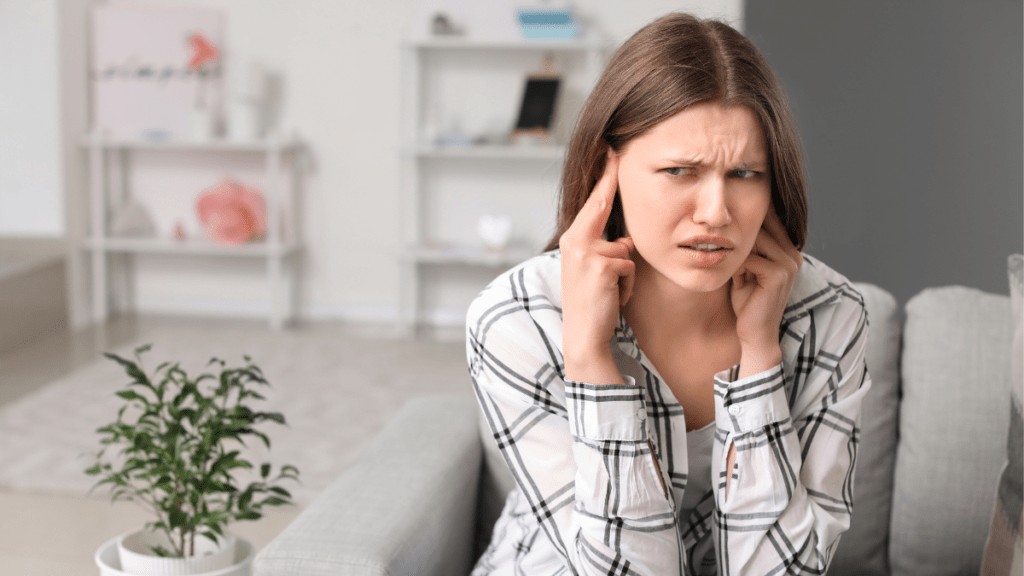
Written by Suzanne Roman
I felt like I would die if whatever noise she was making didn’t stop. It was then, as a young child, that I first realised something may be unusual about the way certain sounds made me feel. My behaviour was mildly amusing to my family and it was assumed to be a part of the strange and quirky child that I was, and that I was sure to grow out of it.
Fast forward to my twenties, when I’m sitting next to my partner counting the seconds between his gulps or the next crunch of his chip, and wondering why I’m such an unreasonable and bad person.
I remember asking my friends whether they get annoyed by the sounds other people make? My question would be met with a giggle and a lighthearted “Of course! I hate it when people chew rudely!” or “Maybe you’re just focusing too much on people.” “Try to focus on something else,” was the usual advice. The problem with that was that I could hear my most hated noises from pretty much anywhere, no matter what I was doing. It’s like an unwanted superpower. I could be hyperfocusing on a task when out of nowhere, “Tsppk!” Someone’s smacking their lips somewhere across the room, or “Snifff!” Someone is sniffing repeatedly. (Have they never heard of tissues????)
Like the young child I once was, I would still want to cover my ears and scream, “Stop!” But these days it probably wouldn’t be considered as “cute” or taken with as much good humour. So I have to walk away – or wear earplugs.
Back in the ‘90s, misophonia was completely unheard-of, and in combination with the lack of Internet (as it certainly was not the vast resource that it is today), anyone experiencing similar feelings was basically on their own, left to their own devices to try and find ways to cope. If they felt anything like me, they were made to feel embarrassed and irrational by the intensity of these feelings that had no reason or explanation.
Misophonia would often be misdiagnosed as anxiety, OCD, or some other disorder. While the condition shares some similar traits with these conditions, it is also different and needed its own diagnosis.
It wasn’t until the early 2000’s that misophonia started to be talked about, and even recognised, as an actual condition. Since then I have learned a lot – the most important of which is that I’m not alone in this. It was not just me being a terrible person and that there was an actual physical condition that was causing my irrational feelings.
I now know that my anger or my desire to run away from certain sounds is due to the powerful fight-or-flight response that these noises trigger in my brain.
Understanding this makes it a little easier to deal with it – which is a good thing because, sadly, finding ways to deal with it is still the only solution for the moment. Some people have had some luck with Cognitive Behavioural Therapy or antidepressants, but this is not necessarily everyone’s ideal solution. Sound generators (small devices that resemble hearing aids that play certain sounds that can reduce triggering sounds) are another option, as are regular earphones playing music or white noise. It is a matter of finding what works for you and the particular situations that are most uncomfortable for you.
Some interesting facts about misophonia are:
Because data is limited, it is estimated that between 3% up to a staggering 20% of the population may be experiencing misophonia.
Considering how little is known about the condition, that is a lot of people who are possibly blaming themselves for their seemingly irrational responses to sounds.
Awareness is on the rise, however, and online communities are forming which is a good way to find new ways of coping with this strange and sometimes debilitating and isolating condition. More and more studies are also taking place and, with that, comes the possibility of new and effective treatments, which will be music to many of our ears.
Suzanne Roman is an Autistic advocate for those living with disabilities, low energy and executive function challenges. She shares practical tips, meal ideas and personal experiences on her blog Low Spoon Living and on her Facebook page.

The Reframing Autism team would like to acknowledge the Traditional Owners of the lands on which we have the privilege to learn, work, and grow. Whilst we gather on many different parts of this Country, the RA team walk on the land of the Awabakal, Birpai, Whadjak, and Wiradjuri peoples.
We are committed to honouring the rich culture of the Aboriginal and Torres Strait Islander peoples of this Country, and the diversity and learning opportunities with which they provide us. We extend our gratitude and respect to all Aboriginal and Torres Strait Islander peoples, and to all Elders past and present, for their wisdom, their resilience, and for helping this Country to heal.